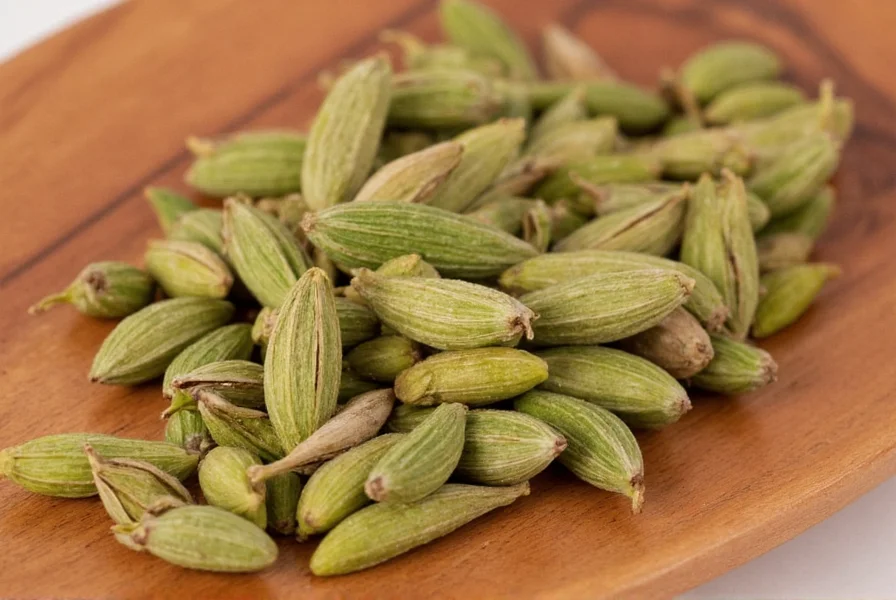Table of Contents
Introduction
Cardamom is a versatile spice used globally in cooking, baking, and beverages. This guide provides actionable steps to maximize its flavor potential, select quality pods, and integrate it into everyday recipes. Whether you're a home cook or culinary enthusiast, these expert techniques will transform your dishes with authentic cardamom aroma and taste.
What is Cardamom?
Cardamom is one of the world's most expensive spices, derived from the seeds of plants in the ginger family. Native to India and Sri Lanka, it thrives in tropical climates. Two primary types exist: green cardamom (most common, floral and citrusy) and black cardamom (smoky and earthy, used in savory dishes). Both are sold as whole pods or ground powder, with whole pods preserving freshness longer.
Flavor Profile of Cardamom
Cardamom's complex flavor combines citrus (like lemon zest), floral notes (reminiscent of orange blossom), subtle earthiness, and gentle warmth. Its refreshing minty aftertaste distinguishes it from other spices. This unique profile makes it ideal for both sweet and savory applications, adding depth without overpowering other ingredients.
How to Use Cardamom in Cooking
Follow these five proven methods to unlock cardamom's full potential:
1. Toast Whole Pods
Heat a dry skillet over medium-low heat. Add whole pods and toast for 1-2 minutes until fragrant. This releases essential oils and intensifies flavor. Cool before crushing to prevent burning.
2. Crush Seeds Properly
Use a mortar and pestle to crush toasted pods, separating seeds from husks. For beverages, add crushed seeds directly to hot liquids. For baking, grind seeds into fine powder for even distribution. Avoid pre-ground powder—freshly crushed delivers 3x more flavor.
3. Enhance Beverages
Cardamom is essential in traditional chai, coffee, and milk-based drinks. For coffee: Add 1-2 crushed pods to grounds before brewing. For tea: Steep pods in hot water for 5 minutes before adding milk. In Middle Eastern coffee, crush 1 pod per cup for authentic flavor.
4. Bake with Precision
Cardamom pairs perfectly with cinnamon, nutmeg, and vanilla. Use 1/2 tsp ground cardamom per cup of flour in cakes, cookies, or bread. For Scandinavian pastries like kanelbullar, add 1 tsp crushed pods to dough. In Indian kheer (rice pudding), simmer pods in milk for 15 minutes before adding rice.
5. Infuse Oils and Sugars
Create flavored bases for dressings or desserts:
- Oil infusion: Add 5 crushed pods to 1 cup olive oil. Let sit 48 hours for marinades or drizzling.
- Sugar infusion: Mix 1 tbsp crushed pods with 1 cup granulated sugar. Store in airtight container for 1 week before using in baked goods.

| Type | Flavor | Best For | Availability |
|---|---|---|---|
| Green Cardamom | Floral, citrusy, sweet | Baked goods, beverages, desserts | Widely available |
| Black Cardamom | Smoky, earthy, bold | Savory dishes, meats, stews | More niche |
Buying Guide for Cardamom
Follow these steps to select premium cardamom:
1. Prioritize Whole Pods
Choose plump, firm pods with vibrant green color (for green cardamom). Avoid shriveled or discolored pods. Whole pods retain flavor 3x longer than pre-ground versions.
2. Test Freshness
Squeeze pods gently—they should crack slightly when pressed. Smell them: Fresh cardamom has a strong, sweet floral aroma. Musty or weak scent indicates old stock.
3. Verify Source
Look for organic certification and transparent sourcing. Reputable brands include Spice Islands, Frontier Co-op, and Rani. Specialty stores like Penzeys or local Indian markets often carry higher-quality options than supermarkets.
4. Check Harvest Date
Cardamom peaks in flavor 6-12 months post-harvest. Avoid products without harvest dates or those stored in clear packaging (light degrades quality).
Cardamom in Culture and Cuisine
Cardamom has deep cultural significance worldwide:
- India: Key ingredient in chai, garam masala, and biryani. Used in Ayurvedic medicine for digestion.
- Middle East: Added to Arabic coffee and desserts like baklava. Symbolizes hospitality.
- Scandinavia: Essential in Swedish kanelbullar (cinnamon buns) and Norwegian gingerbread.
- Traditional Practices: Offered in Hindu rituals as a symbol of prosperity. Used in Japanese matcha desserts for subtle spice notes.
Frequently Asked Questions (FAQ)
What does cardamom taste like?
Cardamom combines bright citrus (lemon zest), floral notes (orange blossom), subtle earthiness, and gentle warmth. It finishes with a refreshing minty aftertaste that distinguishes it from other spices.
How can I maximize cardamom's flavor in my cooking?
Toast whole pods before crushing to release essential oils. Never substitute pre-ground cardamom in critical recipes—freshly crushed delivers 3x more flavor. For beverages, add crushed pods during simmering rather than at the end.
What's the key difference between green and black cardamom?
Green cardamom offers bright, citrusy-sweet notes perfect for desserts and light dishes. Black cardamom delivers intense smokiness from open-fire drying, making it ideal for robust meats and stews. They're not interchangeable—using black in baking creates overpowering bitterness.
How should I store cardamom to preserve freshness?
Keep whole pods in an airtight container away from light and heat. Properly stored, they maintain peak flavor for 12-18 months. Ground cardamom loses potency within 3-6 months, so always buy whole pods and grind small batches as needed.
Can I substitute other spices for cardamom?
No single spice replicates cardamom's complexity. For emergencies: Use equal parts nutmeg and allspice for baking (loses floral notes), or cumin plus a pinch of cinnamon for savory dishes (lacks citrus brightness). These are compromises—authentic recipes require real cardamom.
Why is cardamom so expensive compared to other spices?
Cardamom requires specific tropical growing conditions, labor-intensive harvesting (pods picked by hand when 75% ripe), and careful processing. Only 10-15% of harvested pods meet premium quality standards, creating supply constraints that drive higher prices than mechanized spice production.










 浙公网安备
33010002000092号
浙公网安备
33010002000092号 浙B2-20120091-4
浙B2-20120091-4